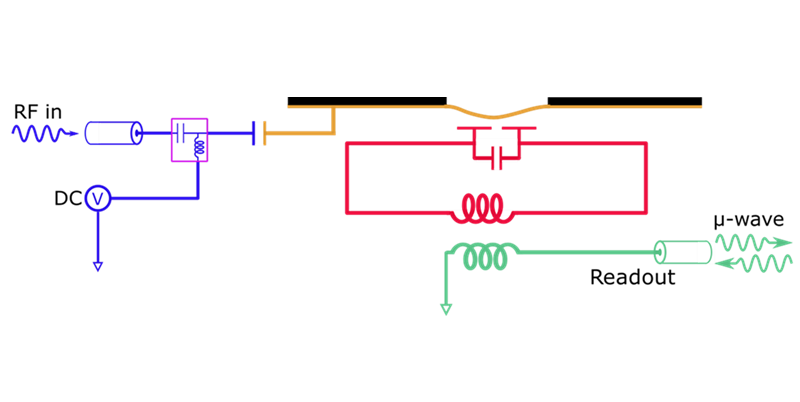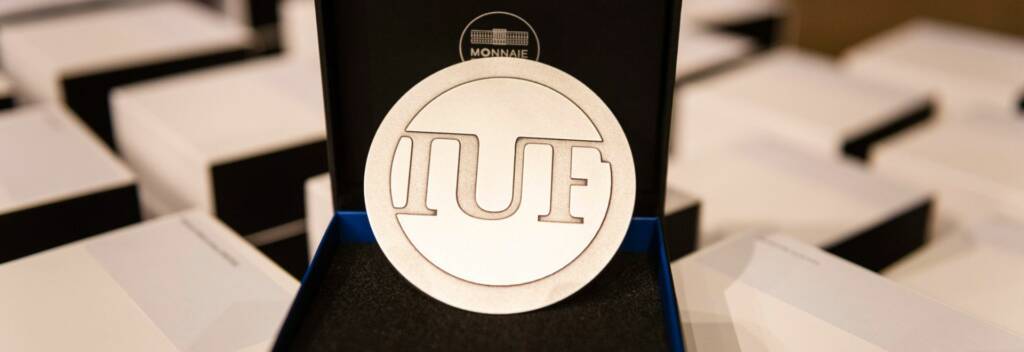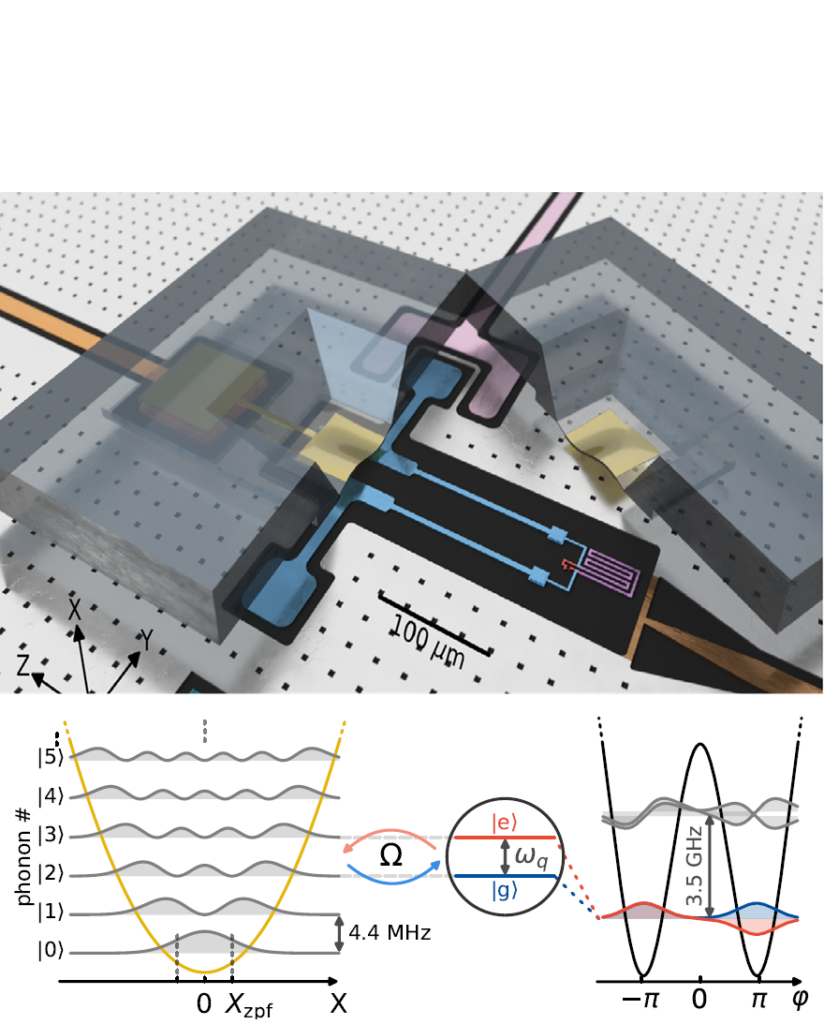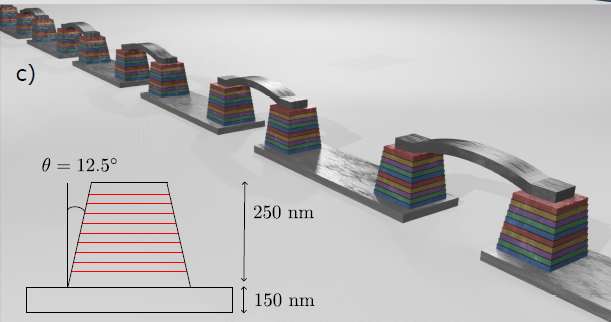- Home
- About the team
- News
- Cryogenic rf-to-microwave transducer based on a dc-biased electromechanical system
Cryogenic rf-to-microwave transducer based on a dc-biased electromechanical system
The Superconducting circuits and mechanical resonators team demonstrates a modular sensitive cryogenic rf-to-microwave transducer based on a dc-biased electromechanical system.

We report a two-stage, heterodyne rf-to-microwave transducer that combines a tunable electrostatic pre-amplifier with a superconducting electromechanical cavity. A metalized Si3N4 membrane (3 MHz frequency) forms the movable plate of a vacuum-gap capacitor in a microwave LC resonator. A dc bias across the gap converts any small rf signal into a resonant electrostatic force proportional to the bias, providing a voltage-controlled gain that multiplies the cavity’s intrinsic electromechanical gain. In a flip-chip device with a 1.5 µm gap operated at 10 mK we observe dc-tunable anti-spring shifts, and rf-to-microwave transduction at 49 V bias, achieving a charge sensitivity of 87 µe/Hz1/2 (0.9 nV/Hz1/2). Extrapolation to sub-micron gaps and state-of-the-art Q>108 membrane resonators predicts sub-200 fV/Hz1/2 sensitivity, establishing dc-biased electromechanics as a practical route towards quantum-grade rf electrometers and low-noise modular heterodyne links for superconducting microwave circuits and charge or voltage sensing.
The preprint can be found on ArxiV: https://arxiv.org/abs/2508.01066
This work is a collaboration with Alice & Bob. It was supported by ANR: MecaFlux (ANR-21-CE47-0011). This work has also been supported by Region Île-de-France in the framework of DIM Sirteq (project CryoParis) and DIM QuanTiP (project COCONUT), and by Sorbonne Université through the HyQuTech “Emergence” program. It was also funded by the Quantum Information Center Sorbonne (QICS doctoral fellowship), and by the CNRS–University of Arizona joint Ph.D. program.
Read also
Thibaut Jacqmin – appointed IUF member
Thibaut Jacqmin has been appointed Junior Member of the Institut Universitaire de France (IUF), Fundamental Chair
Resonant coupling between a superconducting qubit and a macroscopic membrane
The Superconducting circuits and mechanical resonators team has demonstrated resonant coupling between a superconducting qubit and a macroscopic membrane oscillating at a few MHz. They track its quantum motion with ~300 repeated interactions. They demonstrate back-action and probe non-commuting operators.
Pushing the limits of superinductors with vertically‑stacked Josephson junctions
The Superconducting circuits and mechanical resonators team has demonstrated new designs of high-impedance hyper-inductors. We open a scalable path to high impedance hyperinductors for exotic protected qubits.



